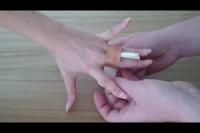American football hand signals simply explained
American football is an interesting sport and difficult to understand for some. Because it is not only important to understand the many moves of the offense, defense, quarterback and Co. Rather, there are question marks overhead when the referees give hand signals after a rule violation.
It is important to know in advance that the playing field is divided into yards, similar to a soccer field, but which is calculated in meters. For each of the following fouls there are space penalties, which are then also calculated in yards. The entire team moves back by the penalty yards and the game starts again from this point.
Hand signals for fouls - player against player
- It is clear that football is a sport in which the players have to be robust. However, there are also hand signals that indicate a personal foul and the penalties for this are not exactly small. Space fines of five to fifteen yards are not uncommon.
- For example, there is the hand signal for reaching into the facemask. The grille on the helmet is called a facemask. It is important to distinguish between two areas. If the grip is quickly released by the opponent, there is a five yard penalty. However, if the mask is pulled and the player is brought down, the penalty can be up to 15 yards. The hand signal for this, which you see at the referee, is a fist on the chin and a pulling movement downwards.
- Another foul is the obstruction of the pass. The penalty here is approx. ten yards. In the case of pass obstruction, the ball catcher is illegally prevented from catching the ball. An example is pushing so that the player falls, or jumping in the legs or side. The hand signal here: Die poor of the referee are stretched far forward and the fingers are pointing upwards.
- At the block in the move two are to be distinguished from each other. There is the block above the belt that is punished with ten yards. The hand signal: the right arm is stretched forward, the fingertips pointing upwards. The left hand encompasses the wrist of the right hand.
- On the other hand there is the block in the back below the line. This is punished with 15 yards. You recognize the offense when the referee touches the thighs with both hands and bent forward. Blocks in the back are prohibited in football as they can lead to serious injuries.
Oh really? Are there rules in rugby too? If you look at the partly wild ...
Hand signals for fouls by individual players
- For both teams, it is important not to move prematurely and so start in the neutral area. If this happens, it is a classic false start. The referee indicates this by having both arms crossed in front of his body and rotating them around the arms. A space penalty of 5 yards will be imposed on the entire team.
- Another very common hand signal that has to do with the start is: The arm is bent in front of the referee's chest and makes a sideways movement. This indicates that the player who has the ball and then hands it over to the quarterback made a violent move before the start. The whole thing is then called "illegal movement". Again, a 5-10 yard penalty is imposed.
- If you see both hands outstretched and crossed in front of you at the referee, you have an incomplete pass. This means that the catcher did not catch the thrower's football or jumped out of his hand. There is no penalty here, but the team is allowed to repeat the move.
If there is a touchdown, meaning the ball has been brought into the end zone, you will see the referee with both arms outstretched upwards. If it is your home team, you can look forward to it.


